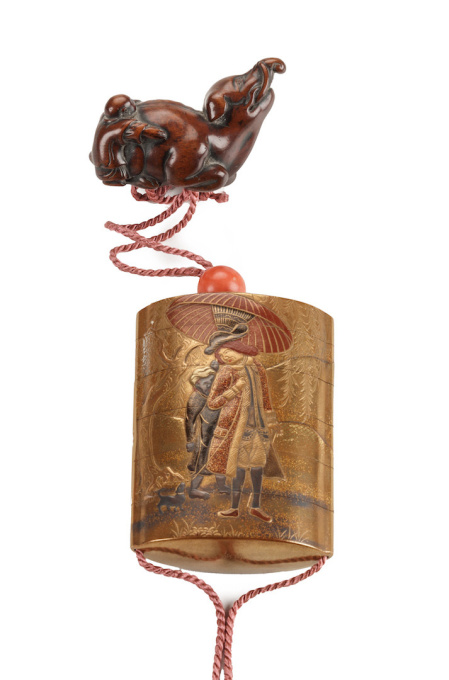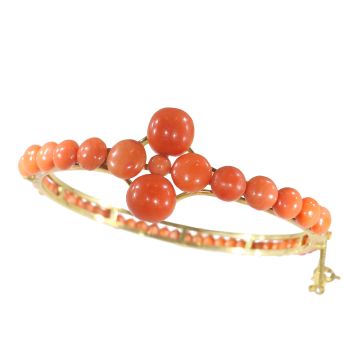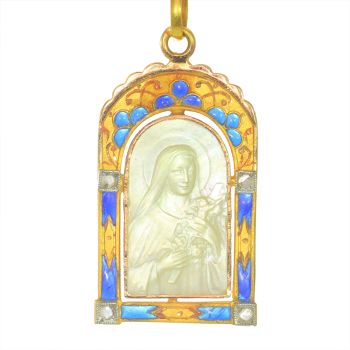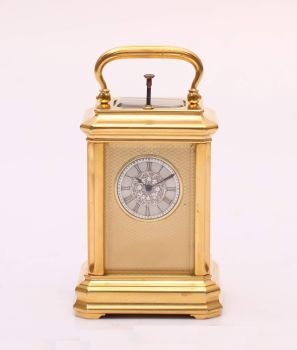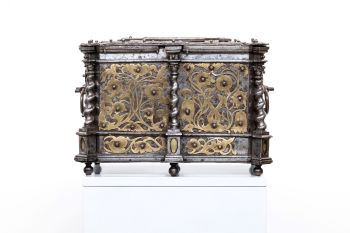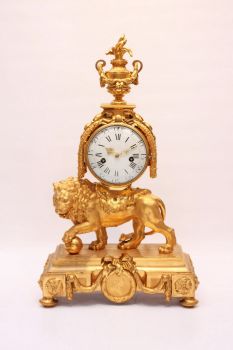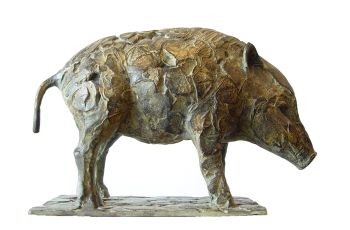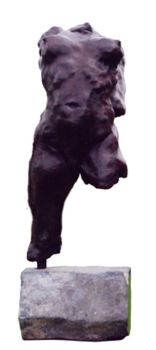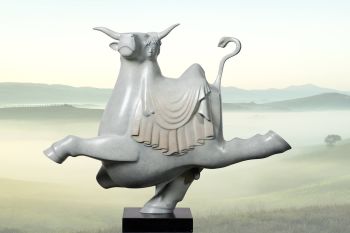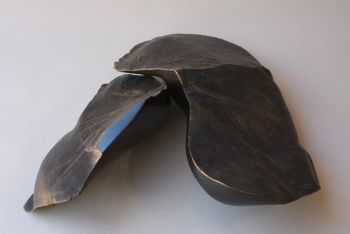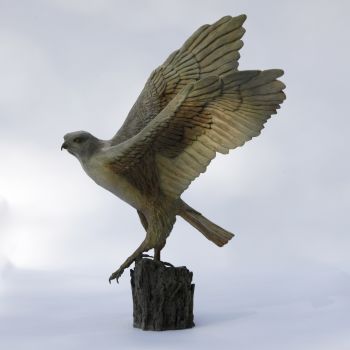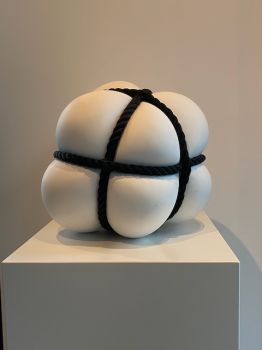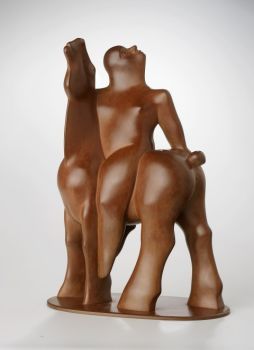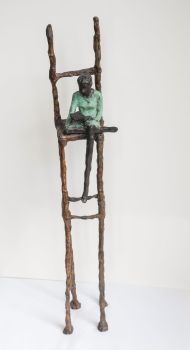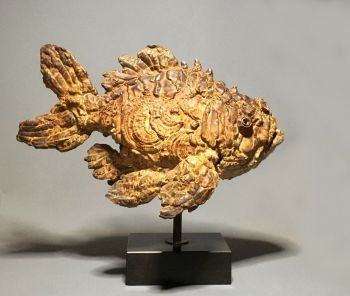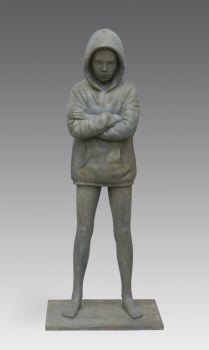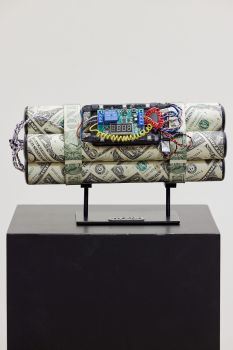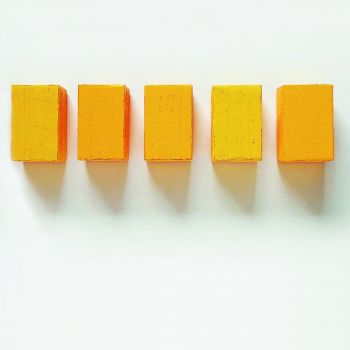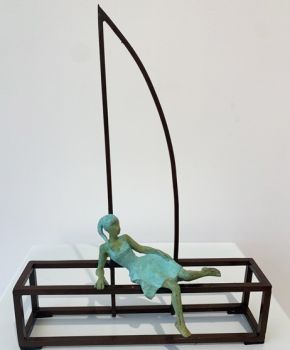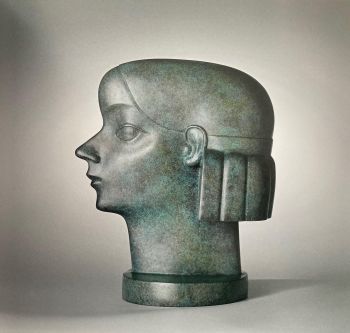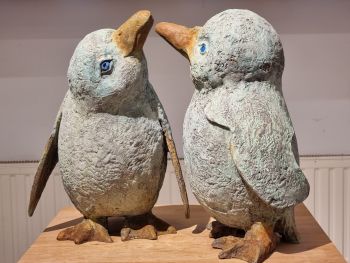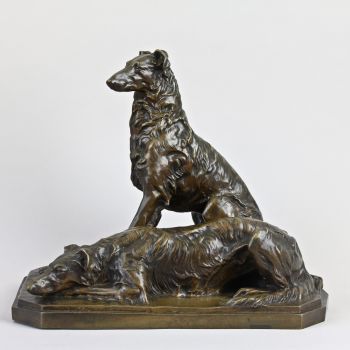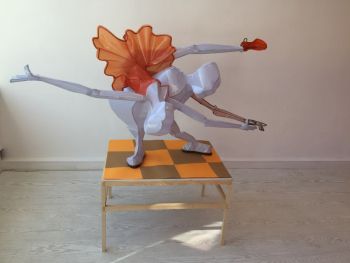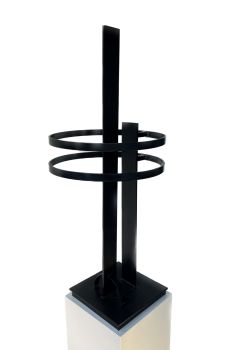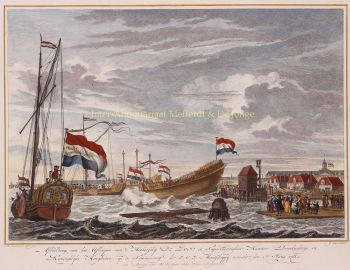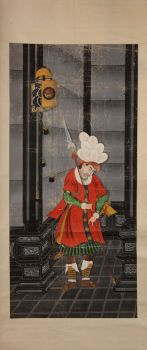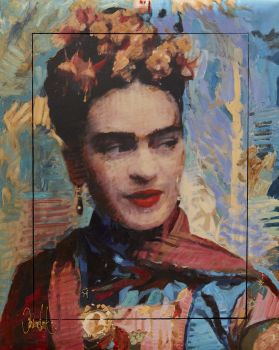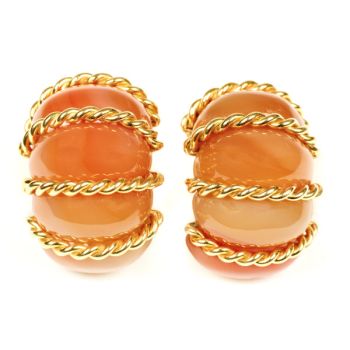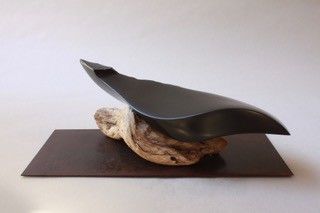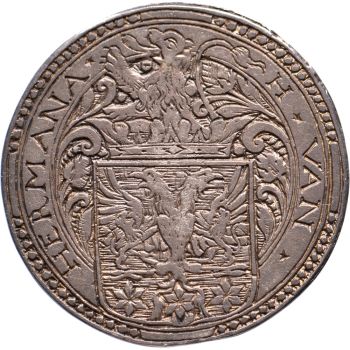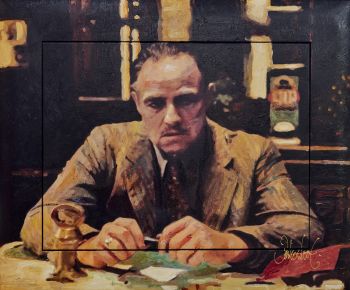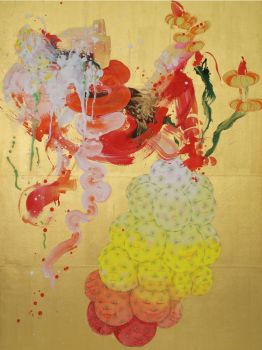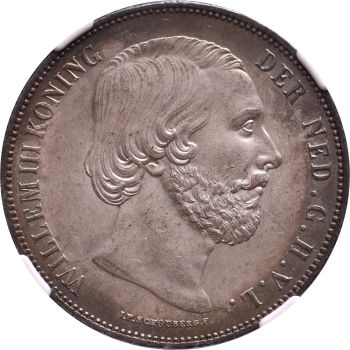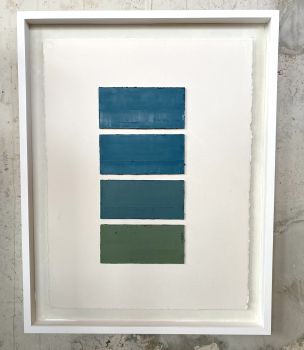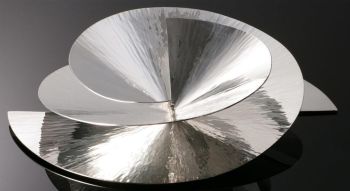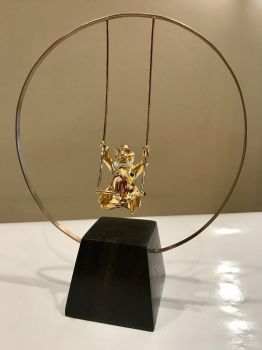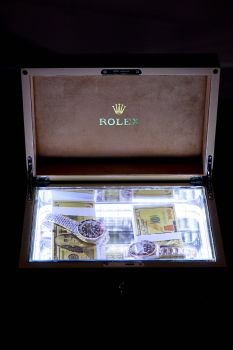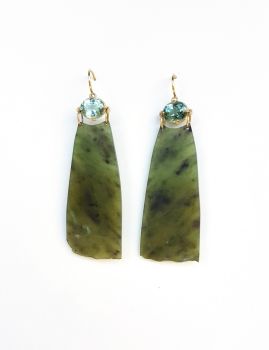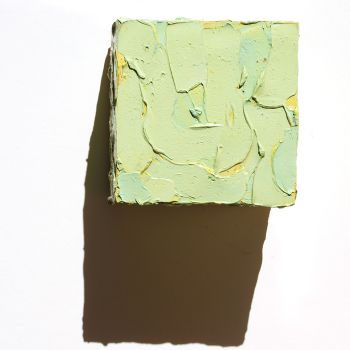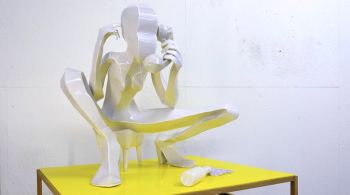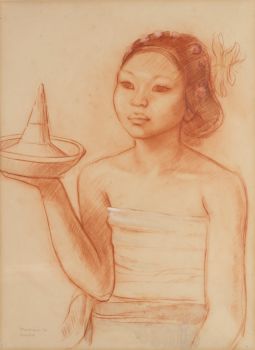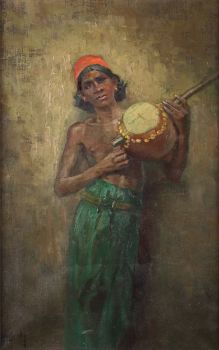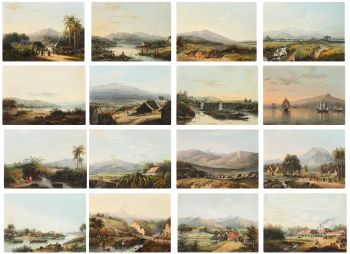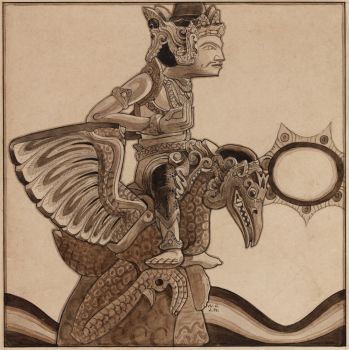Inro fin XVIIIe siècle, netsuke milieu XVIIIe siècle 1850 - 1900
Artiste Inconnu
BoisOrArgent
Actuellement indisponible via Gallerease
Zebregs & Röell - Fine Art - Antiques
- Sur l'oeuvre d'artINRO, OJIME AND BAKU NETSUKE SIGNED KOMA KORYU (DIED BEFORE 1789)
Inro late 18th century, netsuke mid 18th century
Gold lacquered six-compartment inro, decorated in gold and silver hiramaki-e and takamaki-e and with red lacquer, on one side with a Dutchman, his dog and a Javanese servant holding a sunshade, on the other side a Dutch ship with black sails, the inside of the compartments decorated with nashiji, the netsuke, in the form of an elephant and a boy trying to climb onto it, cedarwood.
Inro H. 9 x W. 6.3 cm
Netsuke L. 6 cm
Provenance:
The Frits Philips Collection
Note:
Koryũ family name was Kimura, but this was changed to Koma on his adoption by his brother-in-law Koma KyühakuIII, whose pupil he became. Koma Koryũ was a pivotal figure in the later Koma school, absorbing the skills of his distinguished teacher and passing them on to Kansai I. His pupils also included Omura Gyokuzan and Nomura Kyüho. Koryũ was an inro specialist, but some other artefacts by him are recorded as well.
The decoration of the inro is most likely taken from an early Nagasaki woodblock print of a Dutchman and his servant holding a sunshade, possibly one published by Hariya in the mid 18th century. Since the Dutch, having pockets in their coats and trousers, did not use inro, this inro most likely was not made for export but to satisfy the Japanese fascination for the exotic foreigners. Unlike netsuke of Dutchmen, inro depicting Dutchmen are not common ( for a few examples see A Collection of Nagasaki Colour Prints and Paintings by N.H.N. Mody, plate. 218). The netsuke of the elephant, an animal introduced by the Dutch into Japan, could also be an example of the Japanese fascination with the exotic. - Sur l'artiste
Il peut arriver qu'un artiste ou un créateur soit inconnu.
Certaines œuvres ne doivent pas être déterminées par qui elles sont faites ou elles sont faites par (un groupe d') artisans. Les exemples sont des statues de l'Antiquité, des meubles, des miroirs ou des signatures qui ne sont pas claires ou lisibles, mais aussi certaines œuvres ne sont pas signées du tout.
Vous pouvez également trouver la description suivante :
•"Attribué à …." A leur avis probablement une oeuvre de l'artiste, au moins en partie
•« Atelier de …. ou « Atelier de » À leur avis, une œuvre exécutée dans l'atelier ou l'atelier de l'artiste, éventuellement sous sa direction
•« Cercle de… ». A leur avis une oeuvre de la période de l'artiste témoignant de son influence, étroitement associée à l'artiste mais pas forcément son élève
•« Style de … ». ou "Suiveur de ...." Selon eux, une œuvre exécutée dans le style de l'artiste mais pas nécessairement par un élève ; peut être contemporain ou presque contemporain
•« Manière de… ». A leur avis une oeuvre dans le style de l'artiste mais d'une date plus tardive
•"Après …." A leur avis une copie (quelle qu'en soit la date) d'une oeuvre de l'artiste
•« Signé… », « Daté… ». ou « Inscrit » À leur avis, l'œuvre a été signée/datée/inscrite par l'artiste. L'ajout d'un point d'interrogation indique un élément de doute
• "Avec signature ….", "Avec date ….", "Avec inscription …." ou "Porte signature/date/inscription" à leur avis la signature/date/inscription a été ajoutée par quelqu'un d'autre que l'artiste
Êtes-vous intéressé par l'achat de cette oeuvre?
Artwork details
Related artworks
- 1 - 4 / 12
Artiste Inconnu
UN FILET D'IVOIRE D'UN DUTCHMAN TENANT UN COCKEREL18th century
Prix sur demandeZebregs & Röell - Fine Art - Antiques
Artiste Inconnu
The Stamford Raffles Secretaires.1800 - 1813
Prix sur demandeZebregs & Röell - Fine Art - Antiques
Artiste Inconnu
UN RARE GRAND TÉLESCOPE EN CUIR LAQUÉ JAPONAIS1750 - 1800
Prix sur demandeZebregs & Röell - Fine Art - Antiques
Artiste Inconnu
A rare Japanese export lacquer medical instrument box1650 - 1700
Prix sur demandeZebregs & Röell - Fine Art - Antiques
1 - 4 / 20Artiste Inconnu
Néerlandais en miniature18th century
Prix sur demandeZebregs & Röell - Fine Art - Antiques
1 - 4 / 24Artiste Inconnu
UN PLAT EN ARGENT LOBBED INDONÉSIEN INSOLITElate 17th
Prix sur demandeZebregs & Röell - Fine Art - Antiques
Shiba Kokan
Peinture d'un hollandais fantastiqueearly 19th
Prix sur demandeZebregs & Röell - Fine Art - Antiques
Artiste Inconnu
Deux portraits d'étude du Mas Marco Kartodikromo1900 - 1950
Prix sur demandeZebregs & Röell - Fine Art - Antiques
Artiste Inconnu
The bell of the VOC fortress in Jaffna, Sri Lanka1747
Prix sur demandeZebregs & Röell - Fine Art - Antiques
 Sélectionné par
Sélectionné parDanny Bree
 Sélectionné par
Sélectionné parDanny Bree
1 - 4 / 24Artiste Inconnu
Icône russe représentant une Deesis étendue1600 - 1650
Prix sur demandeKunsthandel H.W.C. Dullaert Icons
1 - 4 / 24HUGO VILFRED VON PEDERSEN
Gadesanger fra Singapore (Musician from Singapore)1870 - 1959
Prix sur demandeZebregs & Röell - Fine Art - Antiques
Shiba Kokan
Peinture d'un hollandais fantastiqueearly 19th
Prix sur demandeZebregs & Röell - Fine Art - Antiques
Abraham Salm
Twenty-four chromolithographs of Java after A. Salm”1801 - 1876
Prix sur demandeZebregs & Röell - Fine Art - Antiques
Artiste Inconnu
GRANDE PEINTURE INDIENNE IMPORTANTE ET RARE `` STYLE D'ENTREPRISE '' SUR IVOIRE REPRÉSENTANT UN DÉFI1850 - 1900
Prix sur demandeZebregs & Röell - Fine Art - Antiques
 Sélectionné par
Sélectionné parDanny Bree
 Sélectionné par
Sélectionné parDanny Bree
Artiste Inconnu
UN RARE GRAND TÉLESCOPE EN CUIR LAQUÉ JAPONAIS1750 - 1800
Prix sur demandeZebregs & Röell - Fine Art - Antiques
Artiste Inconnu
UN PLAT EN ARGENT LOBBED INDONÉSIEN INSOLITElate 17th
Prix sur demandeZebregs & Röell - Fine Art - Antiques
1 - 4 / 12

